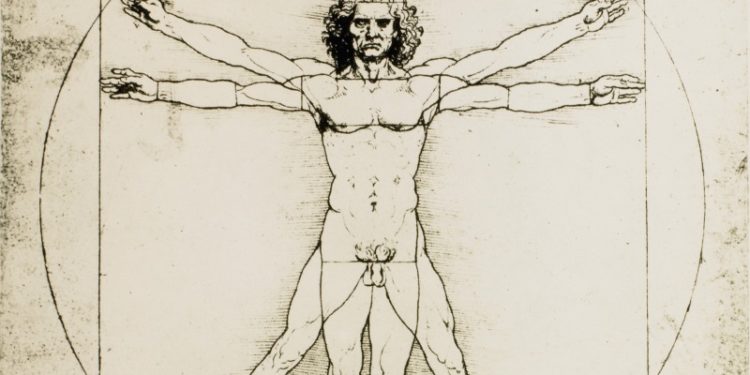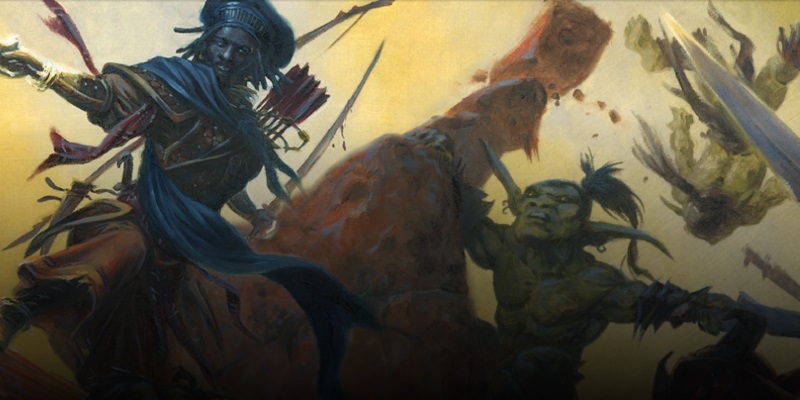
For… almost as long as I’ve been writing Harbinger of Doom, I’ve been talking on and off about how we talk about humans and, as a result, non-humans in fantasy roleplaying, especially D&D. That linked post is very dated at this point, as you’ll see, but I think my points stand. 5e doesn’t try to remedy this; humans remain the adaptable one, with either extra ability score bonuses across the board, or getting to choose an extra skill and an extra feat. A conversation on Twitter pushed me over the edge into writing mechanics for humans that say something about humanity, or that use a more constrained variability.
For all of these, assume that Age, Alignment, Size, and Speed are unchanged.
Aurikesh Humans
For my own campaign, there are two human cultures available to the players. (This is a revision of the mechanics at the end of the post I linked above.) Mechanically, these are handled as race and subrace – in Aurikesh, all of the “subraces” are cultural rather than physiological distinctions, except for the Parthé, a magical subrace that any other race can take.
(I’m not attached to race and subrace terminology; I use it here for clarity, because changing that terminology is a separate conversation from changing how we talk about human mechanics.)
I’m saying specific, definite thing about humans in Aurikesh. They’re strong-willed (reroll one failed Wisdom save per short rest) and impulsive (advantage on initiative checks). One subrace is known for their love of guns (proficient with pistols, muskets, blunderbusses, and long rifles) and their violent streak (1/long rest, +1d4 to attack and damage against one enemy that hasn’t yet acted in this encounter). The other subrace is known for being industrious (proficiency with one set of artisan’s tools, benefits when using the Crafting downtime action) and studious (benefits with the Training downtime action).
The conversation that sparked this post argued for getting rid of ability score adjustments from race (see also James Haeck’s article on DnD Beyond). I’m fine with that, though it’s not the context in which I designed Aurikesh humans (+1 to each of two different scores). I’m aware also that these humans and all Aurikesh races are underpowered compared to core races. For the mechanics blocks below, I’ve included Ability Score Increases for ease of use alongside book mechanics. On the other hand, if you do use these and want to chop Ability Score Increases from race, these have the same approximate values as nonhuman races, so you can simply drop them and put everyone on about the same footing (other than half-elves and mountain dwarves).
Chosen for Corruption
4e D&D’s pre-release material suggested that humans were the most susceptible to corruption. What could that look like, as a mix of positive and negative features? The Men of Middle-Earth are the first source text to spring to mind here.
- Ability Score Increase. Your Constitution score increases by 1, your Charisma score increases by 1, and either your Constitution or Charisma score increases by an additional 1.
- Curse-binder. Your wrath falls heavily upon those who have wronged you. You know the thaumaturgy When you reach 3rd level, you can cast bane as a 2nd-level spell once with this trait, using only verbal components, and regain the ability to do so when you finish a long rest. When you reach 5th level, you can cast bane as a bonus action rather than an action.
- Dangerous Presence. You have proficiency in the Intimidation skill.
- Where Angels Fear to Tread. You have advantage on saving throws against being frightened. When you succeed a saving throw against being frightened, you gain temporary hit points equal to your Constitution or Charisma bonus, whichever is higher (minimum 1).
- Languages: You can speak, read, and write Common and one other language of your choice.
Part of the concept here is that bane doesn’t have a strong visual element. With just a verbal component, you’re screaming curses at your enemies… and the curses actually hinder them. Thaumaturgy is pure creepiness. Well, that and the fact that I didn’t have another cantrip I liked to slot in there. Where Angels Fear to Tread describes a human tendency to over-commit in dangerous situations.
Abnormally Tenacious
What would it look like if “necessity is the mother of invention” were the core of human mechanical design?
- Ability Score Increase. Your Constitution score increases by 1, your Intelligence score increases by 1, and either your Constitution or Intelligence score increases by an additional 1.
- Any Weapon in a Pinch. You have proficiency with improvised weapons.
- Resurgence. When you spend a Hit Die to recover hit points as part of a short rest, you can add your Wisdom modifier (minimum 1) to the die result as long as your current hit points are less than half your maximum hit points.
- There’s Always a Way. You have proficiency in the Survival skill.
- Try Again. When you fail an ability check other than Wisdom (Insight) or Wisdom (Perception), you gain advantage on the next ability check you make to solve the same problem, as long as you use a don’t use the same skill that you used for the initial roll.
- Languages: You can speak, read, and write Common, and you learn new languages in half the normal time when you use the Training downtime activity.
In principle, these two types of humans could both be just… the humans of your setting. They’re all attitude rather than physical differences. These aren’t genetic – picking human leads directly to picking one of those types, but there’s no in-character signifier.
Future Efforts
My ideal format for humans and, eventually, other races would be an a la carte situation, where you get to pick a few (let’s say two?) major traits and a few (let’s say three?) minor traits, taken from more extensive lists. The goal would be to support a lot of different ways for individuals to express humanity, elven nature, and so on, as well as an easier mechanical framework to support mixed-race characters. That’s much deeper, ground-up work than I’m prepared to write here, and it does lose a lot of the right-out-of-the-box usability of 5e. It’s one of the things that I find intriguing and appealing in PF2, though PF2’s everything-is-a-feat structure leaves me cold in itself.
Many thanks to Colin and Shawn for their feedback on an earlier draft of these rules.



